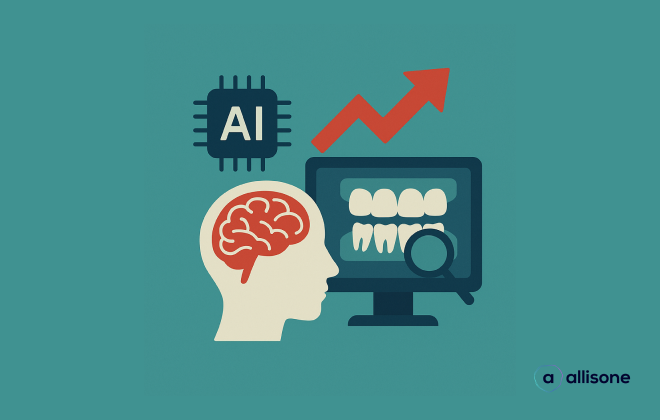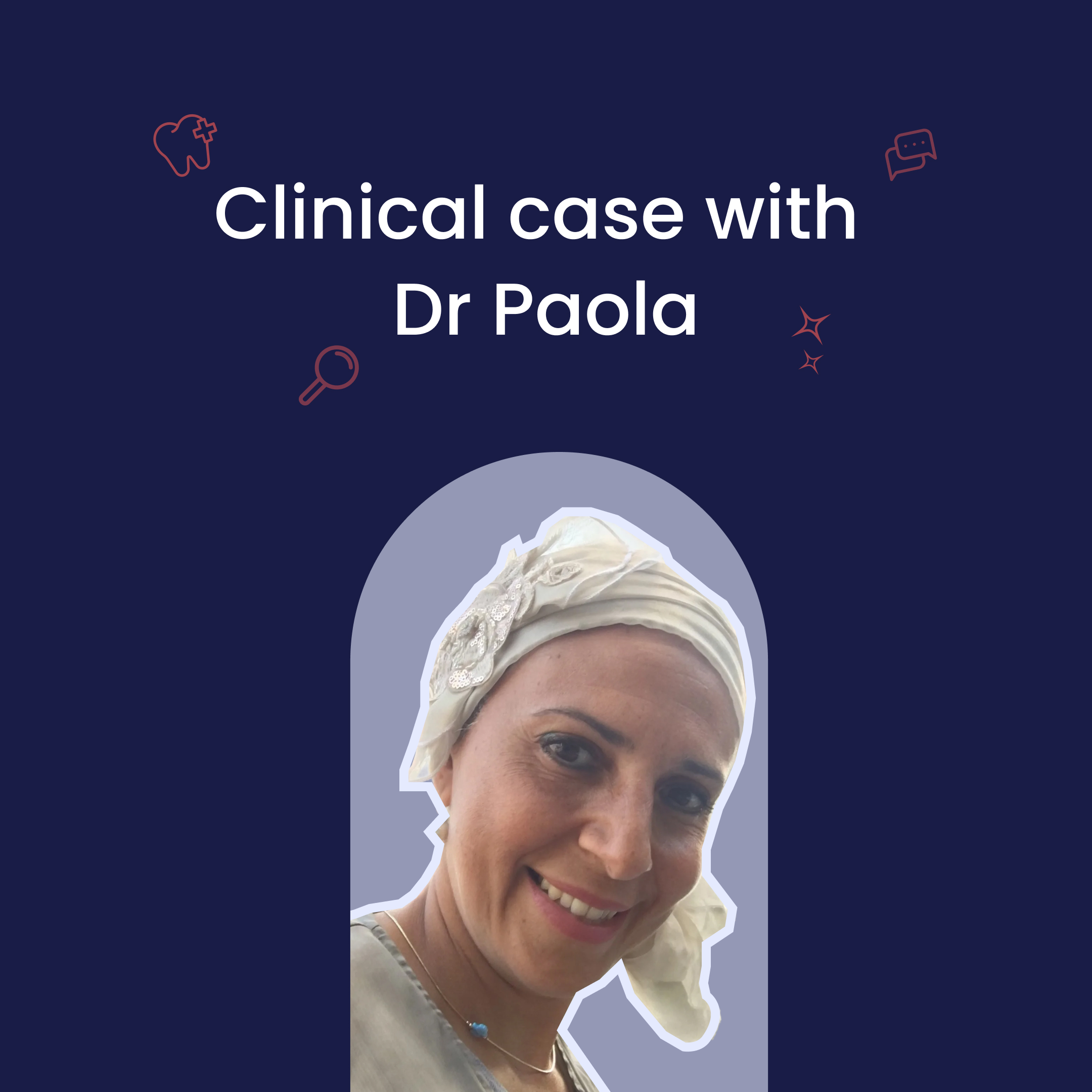
The Internet of Things (IoT) is a technological phenomenon whereby physical objects, such as cars, buildings, appliances, medical devices or clothing, are connected to the Internet and can interact with each other. These connected objects are equipped with sensors that allow them to capture data from their environment and send it back to their users or service providers.
Today, IoT is making its way into the healthcare industry. In concrete terms, what is it? How does it materialize? What are the benefits and challenges? How does it translate into dentistry? We take a look at it in this blog post!
What is the IoMT?
IoMT refers to all connected systems: wearable devices, software applications, connected objects, etc., that offer innovative ways to improve patient care and give physicians access to real-time data. By connecting medical devices, such as wearables and implants, with secure networks and cloud-based analytics, IoT applications enable healthcare professionals to connect and exchange data with each other and with patients. They are also transforming the way we diagnose, monitor, treat and manage disease.
From remote patient monitoring to telemedicine, the potential of IoT in healthcare is limitless and will continue to advance the way we do healthcare.
IoMT assets:
Implementing IoT in healthcare brings a number of important benefits that are helping to revolutionize the industry, including:
- Increased efficiency: The ability to monitor patients remotely, quickly access their records, and manage large amounts of data in real time significantly improves the efficiency of healthcare providers.
- Improving patient care: IoT in healthcare applications can be used to help physicians make more informed decisions about a patient's treatment plan. Wearable devices, for example, can be used to monitor a patient's vital signs and alert doctors to any potential health issues.
- Cost reduction : By automating processes and eliminating the need for manual data entry, the Internet of Things in healthcare can reduce the time spent on certain time-consuming tasks and therefore costs overall. Additionally, with its ability to provide remote monitoring, it can reduce the need for in-person visits and hospital stays, allowing for increased agility.
- Improving quality of life : Wearable medical technology and other IoT devices can be used to help patients self-manage their health, effectively monitor their treatment plans and improve their quality of life.
IoMT applications:
As IoT technology continues to develop, a number of exciting applications are on the horizon for healthcare organizations. Here are just a few:
- Remote patient monitoring: IoT devices are able to provide real-time data on a patient's health. Whether they are worn (wearable device - e.g. connected bracelets), used on an ad hoc basis (monitoring device - e.g. glucose meter) or installed (such as a fall detector), they will allow healthcare professionals to quickly identify potential problems and intervene if necessary.
- Advanced diagnostics: By combining AI with medical imaging, doctors will be able to use IoT devices to diagnose diseases at their earliest stages, leading to potential early management and better patient outcomes.
- Robotic surgery : The use of robots in surgery is becoming more common, and with the help of IoT devices, surgeons will be able to perform even more complex and precise procedures.
- Smart hospital rooms: Smart hospital rooms can use sensors to monitor a patient's vital signs, provide medication reminders and alert staff to any changes in the patient's condition.
- Wearable devices: Smartwatches, fitness trackers and other wearable devices will be able to provide a wealth of data about a person's health, giving doctors more information to work with in providing care.
IoMT applications in dentistry:
Accessibility and storage of data:
One of the main benefits of IoMT is the accessibility and storage of patient data. This is because with these technologies, dentists can securely store patient data in a central location, making it easier for them to access this information remotely when needed. It also reduces the amount of paperwork and potential loss of documents since all data is stored electronically. In addition, this data can be shared with other healthcare professionals or specialists if needed, allowing them to collaborate effectively between professionals on cases and treatments.
Patient engagement and education:
Another benefit of the IoMT is its ability to improve patient engagement and education by providing interactive tools such as video tutorials and oral hygiene educational materials. This helps to engage patients in their treatment plan, allowing them to better understand their condition and motivating them to take an active role in their own dental health. In addition, these interactive tools allow dentists to track patients' progress over time, so they can more effectively monitor any changes or improvements in their oral health.
Improved diagnosis and treatment planning:
Finally, the IoMT provides dentists with better diagnostic capabilities through digital imaging technology, such as X-rays and 3D scans. This allows dentists to diagnose certain conditions more accurately than ever before, resulting in faster treatment planning and better patient outcomes. In addition, digital imaging technology also reduces radiation exposure compared to traditional methods, making treatments safer for both dentists and their patients.
The challenges of its implementation:
Despite the many benefits of the Internet of Things in healthcare, there are several challenges that must be addressed to ensure a successful implementation, including:
Data security and proper management: One of the biggest concerns about IoT adoption in healthcare is security. With sensitive patient data being transferred between medical devices and cloud-based systems, it is essential to have strong security measures in place to protect it. Ultra-secure systems such as blockchain systems could help address this challenge.
Interoperability between systems: Another challenge is to ensure that medical devices from different manufacturers can communicate with each other, making data sharing easier and more efficient. This requires the development of a standard protocol for all IoT devices to follow and standards to build upon, but this will be simplified by interoperable and open but secure environments.
Investing in the overall modernization of systems in use: Many healthcare organizations still use outdated systems and technologies, which can make it difficult to integrate newer IoT applications. This requires investment in new infrastructure, as well as training staff to use the new technology.
Regulatory compliance: it's important for healthcare organizations to ensure that any IoT applications they deploy are compliant with regulatory requirements. This means staying up to date with the latest standards and regulations, as well as ensuring that all devices meet the necessary security requirements.
In sum, the Internet of Things in healthcare is transforming the way we provide care and offering a variety of benefits for patients, healthcare professionals and, more broadly, society as a whole. As IoT technology is increasingly adopted, it is important for healthcare organizations to ensure that their systems are secure and compliant with all applicable regulations. By doing so, they will be able to take full advantage of the opportunities presented by this exciting new technology.
As with all new technologies and applications, it will be up to everyone to learn to master them and to deal with the standards that regulate them in order to make the most of them.
Articles en lien
Lorem ipsum dolor sit amet, consectetur adipiscing elit.

Comment l’intelligence artificielle optimise le diagnostic médical et la compréhension patients

L'avenir des cabinets dentaires : intelligence artificielle et gestion connectée au service des praticiens






